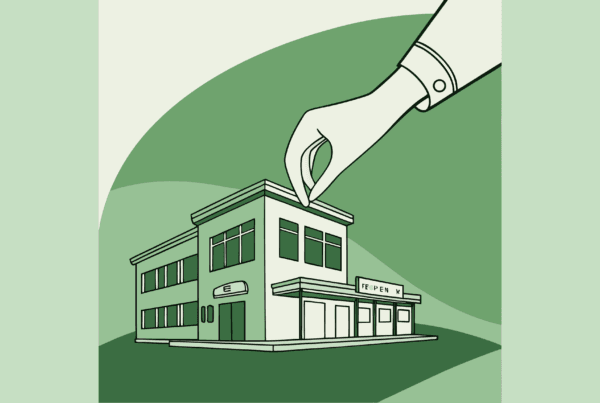Selling your Orthopedic and Post-Surgical Rehab practice in Nashville presents a significant opportunity. The market is strong, demand for services is high, and buyers are active. However, turning this opportunity into a successful sale is a nuanced process. This guide provides insight into the Nashville market, what buyers look for, and how to navigate the path to a successful exit. Proper preparation is the key to maximizing your practice’s value.
A Glimpse at the Market
The decision to sell your practice is personal. The market conditions, however, are objective. Right now, the environment for orthopedic and rehab practices is healthy, both nationally and here in Nashville.
A Growing National Tide
The tailwinds are strong. The U.S. orthopedics market is projected to grow from $57.3 billion in 2023 to over $74 billion by 2028. Similarly, the physical therapy market is expanding steadily, with a projected growth rate of 4.6% annually. This growth is fueled by an aging population and a significant increase in orthopedic surgeries, creating sustained demand for the services you provide.
The Nashville Advantage
Nashville stands out as a major healthcare hub. The presence of large, established groups like Tennessee Orthopaedic Alliance and Vanderbilt Health isn’t a threat. It is proof of a vibrant and demanding market. This ecosystem creates more potential buyers, from private equity-backed platforms to strategic hospital acquirers, who are actively looking for well-run practices to join their networks.
What Buyers Look for in a Nashville Practice
A strong market is a great start, but buyers look past the trends and deep into the details of your specific practice. Before you go to market, you need to see your practice through their eyes. How reliant is the business on you personally for patient care, referrals, and daily management? A practice that can run smoothly without your constant presence is far more valuable and less risky to a new owner. Buyers will also scrutinize your financial records, looking for clean data to calculate your true profitability (Adjusted EBITDA). In Tennessee, understanding the nuances of regulations like Direct Access laws can also impact your operational story. Addressing these areas before a sale is not just good practice. It directly impacts your final valuation.
Understanding Current Deal Trends
The M&A landscape is always shifting. While the “gold rush” of private equity investment seen a few years ago has moderated, the market for Orthopedic and Rehab practices remains active. It has just become more strategic. Understanding who is buying and what they are looking for is key to positioning your practice effectively.
Here is a simple breakdown of the current environment:
| Buyer Type & Trend | What This Means for You |
|---|---|
| Private Equity (PE) | Activity has slowed from its peak but is still present for strong “platform” practices. They seek high growth and efficiency. |
| Strategic Acquirers | Hospitals and large regional ortho groups are key drivers of consolidation. They look for practices that expand their geographic reach or service lines. |
| Market Pace | After a quieter start to 2024, quality practices continue to attract significant interest. A competitive process is more important than ever. |
The key takeaway is this. The market no longer rewards every practice equally. It rewards the ones that are professionally prepared and strategically presented to the right pool of buyers.
Navigating the Path to Closing
Selling a practice is a structured project, not a single event. It begins long before the “For Sale” sign goes up. The first phase is preparation. This involves organizing your financials, clarifying operations, and building a compelling story about your practice’s future. Next, we would confidentially identify and approach a curated list of potential buyers. Once interest is established, you move through negotiation and signing a letter of intent. This leads to the most critical phase: due diligence. Here, the buyer examines every aspect of your practice, from your accounting and billing compliance to your staff contracts. Many deals encounter trouble here. Proper preparation is your best defense. A smooth due diligence phase leads to the final legal negotiations and, ultimately, a successful closing.
What Is Your Practice Really Worth?
One of the first questions owners ask is, “What is my practice worth?” The answer is more complex than a simple multiple of your annual revenue. Sophisticated buyers value your practice based on its profitability, specifically its Adjusted EBITDA (Earnings Before Interest, Taxes, Depreciation, and Amortization).
The Power of Adjusted EBITDA
This is not the profit you see on your tax return. We calculate Adjusted EBITDA by taking your stated profit and adding back owner-specific expenses like personal travel, a high-than-market salary, or other discretionary costs. This reveals the true cash flow of the business, which is what a buyer is purchasing. A practice with $500,000 in net income might have a true Adjusted EBITDA of $700,000 or more.
Factors That Drive Your Multiple
This Adjusted EBITDA figure is then multiplied by a number (the “multiple”) to determine your practice’s enterprise value. That multiple is influenced by several key factors:
- Provider Model: Practices that are not dependent on a single owner and have a strong team of associates command higher multiples.
- Growth Trajectory: Demonstrable, consistent growth in patient volume and revenue is highly attractive to buyers.
- Payer Mix: A healthy balance of commercial insurance, Medicare, and cash-pay services indicates stability.
- Operational Strength: Efficient scheduling, billing, and clinical workflows show a well-managed business.
A comprehensive valuation is the only way to truly understand what your practice is worth in today’s market.
Life After the Sale: Planning Your Transition
The transaction is not the end of the story. It is the beginning of a new chapter for you, your staff, and your legacy. A critical part of any negotiation is defining your role after the sale. Do you want to continue practicing clinically for a few years, transition into a leadership role, or make a clean break? Many modern deals involve more than just a cash payment at closing. You may be offered an “earnout,” where you receive additional payments for hitting future performance targets, or “rollover equity,” where you retain a minority stake in the new, larger entity. These structures can provide significant financial upside, but they require careful planning. A well-structured deal protects your team, preserves your legacy, and ensures the transition aligns with your personal and financial goals.
Frequently Asked Questions
What is the current market outlook for selling an Orthopedic & Post-Surgical Rehab practice in Nashville?
The market for selling Orthopedic and Post-Surgical Rehab practices in Nashville is strong and healthy, with high demand for services and active buyers. Nashville benefits from being a major healthcare hub which attracts private equity-backed platforms and strategic hospital acquirers searching for well-run practices.
What key factors do buyers consider when evaluating an Orthopedic & Post-Surgical Rehab practice in Nashville?
Buyers look for practices that are not overly reliant on the owner for patient care and management, have clear and clean financial records to calculate Adjusted EBITDA, and understand and comply with local regulations like Tennessee’s Direct Access laws. Operational independence, profitability, and regulatory compliance significantly influence valuation.
How is the value of an Orthopedic & Post-Surgical Rehab practice in Nashville determined?
The value is based primarily on the practice’s Adjusted EBITDA, which reflects true cash flow by adding back owner-specific expenses to net income. This figure is then multiplied by a factor influenced by provider model, growth trajectory, payer mix, and operational strength, making a comprehensive valuation essential to understand the practice’s worth.
What does the selling process for a practice in Nashville typically involve?
The selling process is structured and begins with preparation—organizing financials, clarifying operations, and crafting a future growth story. It progresses with confidential buyer identification, negotiation, signing a letter of intent, due diligence, and final legal negotiations leading to closing. Proper preparation is crucial to smooth due diligence and successful sale.
What transition options are available for practice owners after selling their Orthopedic & Post-Surgical Rehab practice?
After the sale, owners may choose to continue practicing clinically, take on leadership roles, or exit fully. Deals often include options like earnouts for future performance incentives or rollover equity where owners keep a minority stake. Structuring transition plans carefully is important to protect staff, preserve legacy, and meet personal and financial goals.



